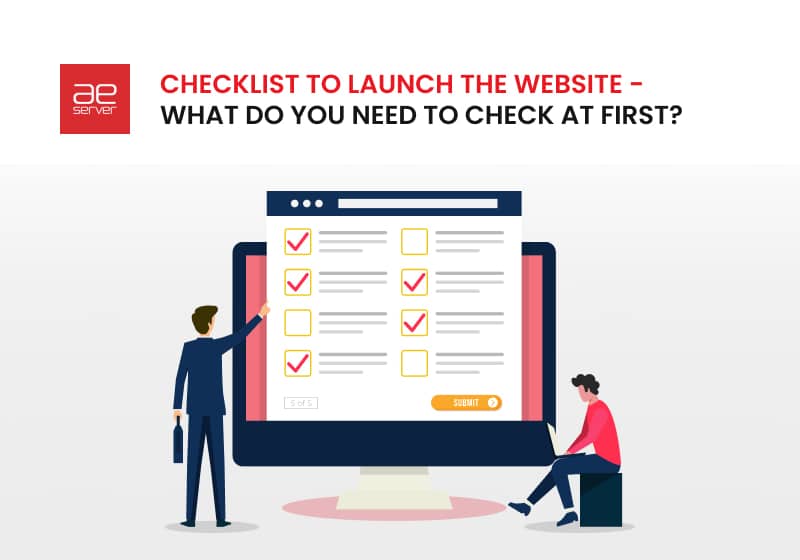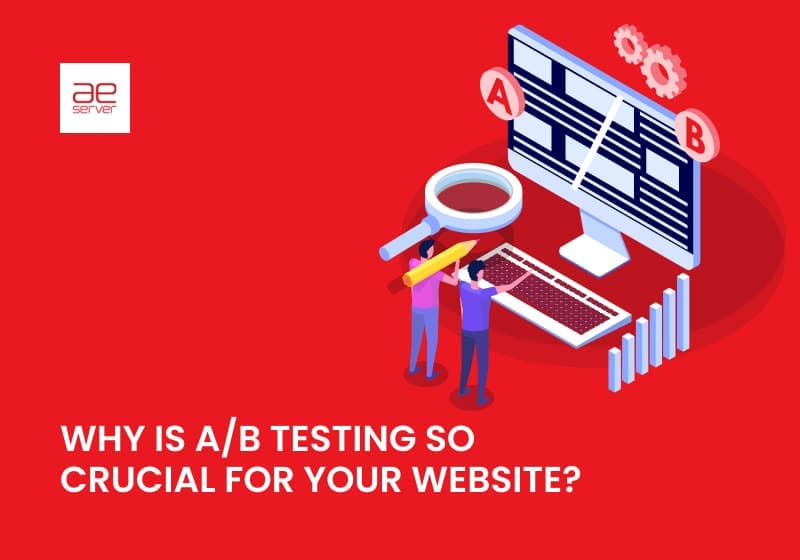
Front End vs Back End Development: What’s the Difference?
Front end and Back end are the most popular terms in the computer industry. The front end is what users interact with, and the back end is how everything works. Both sides need to communicate effectively as a single component to improve the website’s functionality.
So, let’s dive deep into Back end vs Front end to understand why they exist in the first place, the key differences and what Front end and Back end technologies are widespread these days.
What Is Front end Development?
Front end development is built with the user in mind. It is the part of the website or application that deals directly with the user. It is also considered the client side of the application. It includes every element a user can experience: web layouts, styles, images, tables, graphs, buttons, text and navigation menu.
The two main objectives of Front end development are responsiveness and performance. The developer must ensure the site is responsive means it appears correctly on all devices, and all parts of a website should function properly irrespective of the screen size.
Related: Website Builder vs. Coding Yourself: Which One is Better?
Features:
Along with its extensive functionalities, the front end has many features.
Client Side Rendering: It allows developers to render the entire website on the local computer instead of the remote web server.
Server Side Rendering: It allows the rendering of websites directly on the users’ browsers based on the changes requested by the user.
Optimization: Fine-tuning HTML, CSS, and JavaScript ensures the website loads quickly for the users.
What Is Back end Development?
The back end is like the behind-the-scenes of a movie. It is called the server side of an application. It contains all of a website’s data and ensures that the website’s client-side works efficiently. It is the part of the website or application that a user cannot interact with. Users indirectly access the features developed by Back end developers through a front end. Tasks like programming, creating libraries, writing APIs, and working with system components without a user interface are included in the Back end.
Related: WordPress Hosting vs. Web Hosting: What’s the Difference?
Features:
Just like the Front end, the Back end also comes with many beneficial features.
Databases: these contain the necessary data of users.
Website Architecture: It involves a website design, including the goals required to build the application.
Scripting: It implies the proper composition of the framework.
API: Application User Interfaces or APIs help integrate application software and deliver the necessary data.
Technologies Involved in Web Development
If we talk about Back end vs Front end development, both use different technologies that imply languages and frameworks. This section will also answer the most asked question, “is javascript Front end or Back end?”.
Front end Languages
HTML: HyperText Markup Language, also known as HTML, is used to build web pages. It has different elements that provide a website’s basic layout, images, and visuals. It is simple to use, has multiple browser support and is a combination with other languages.
CSS: CSS is short for Cascading Style Sheets, like a website’s interior design. It narrates the HTML part that gets rendered during the development. It’s a straightforward language with multiple browser support and speed, but it is sometimes tedious to beginners.
JavaScript: JavaScript is the most popular Front end development language. It’s famous for its flexibility and responsiveness to the website. It has a simple nature, provides excellent speed, and additional functionality like creating forms, dialogue boxes, pop-ups, etc. Debugging in javascript is quite tricky. However, Javascript is also used in Back end development.
Dart: Dart is mainly used to develop mobile applications. It is similar to Java and C languages. You can create anything from the language, websites, mobile apps, servers, and desktop software with this language.
Related: Web Hosting vs Domain Name: What’s the Difference?
Front end Frameworks
Vue.js: it’s a framework for JavaScript and is used to develop compact web applications.
AngularJS: this is also a web framework built around JavaScript. It provides attractive features to the HTML templates and increases performance.
React: React is the most popular framework built around JavaScript that enhances the User Interface elements and provides a dynamic nature to web applications.
Back end Languages
Python: Python is the most used language by developers because of its advantages like huge collections of libraries, integrations, easy code readability, versatility, etc.
PHP: PHP is another widely used Back end language. It provides cross-platform compatibility, database integrations, object-oriented programming features and security.
Java: Java is popularly used for building desktop and android applications. Other features of Java include portability, automatic memory allocation, and a one-time compilation.
Ruby: Ruby is a general-purpose language with features like an extensive standard library, scalability, flexibility, etc.
Back end Frameworks
Django: It is an advanced web framework with built-in plugins. It is widely used for its customizability benefit. It is best for large-scale and data-driven web applications. However, it is not suggested for small-scale applications as it fills them with unnecessary characters.
Laravel: Laravel is a PHP framework with a built-in modular packaging system and a dependency manager. It is suitable for tapping into relational databases, caching, simplifying the API process, live commenting, and improving your authentication.
ASP.NET : it’s an open-source web framework used to build dynamic web pages and touted as a modular framework for improved maintenance, minimal coding, and cross-platform support. The core framework strives for superior performance compared to other frameworks. The C# language powers this framework.
Ruby on Rails: Its web framework is written in the Ruby language. It is used for flawless data table formation and migration. The additional advantages are easy compilation and testing.
ExpressJS: Essentially used to build APIs and applications. It functions as a Back end and also a Front end solution for specific databases like NoSQL. NodeJS is the language inside ExpressJS.
CakePHP: CakePHP is a popular PHP framework. It is used in developing both small and big applications because it is easier to configure and provides complete security.
Related: Managed vs Unmanaged Hosting: Which Solution is Best for You?
Back end vs Front end – Key Differences
Now that you’ve gotten an overview let’s discuss the differences. Following are the key distinctions that set front and Back end development apart.
The Front end is the part of the website or application a user interacts with. The Graphical User interface lets users take actions as per their wishes. In contrast, the user cannot see the Back end part of the website. It handles the functionality of the website and collects data.
The job of a Front end developer is to design the web layouts, and the Back end developer has to attain a functional stage.
Front end development is not just about the beauty of a website; thus, a Front end developer should have the idea of Back end. In contrast, Back end development is about calculations, logic, APIs, servers and testing. Collaborating between developers is crucial because data is passed through particular formats.
Back end Vs Front end Developers
We already know about the features and tools used in Back end vs Front end development fields. What about the actual jobs of developers? Each type of development requires specific skills.
So, let’s look at Back end Vs Front end Developers’ tasks.
Front end Development Tasks
- Using frameworks and creating new code for the whole architecture to ensure an efficient user experience.
Working with AJAX to improve the presentation of data without reloading the page. - Communicating with Back end developers to merge databases with Front end components such as buttons, menus and forms.
- Creating prototypes, mockups and wireframes to get an idea of the final product.
- Testing and debugging to ensure a flawless user experience.
- Thinking creatively to improve the user experience, using out-of-the-box ideas and communication skills to interact with product managers, customer support, and other stakeholders.
- Accepting suggestions and changes from stakeholders and users, then transforming those thoughts into codified solutions.
- Assembling all visual pieces, such as photographs and texts from other creative workers, and bringing them all together to ensure everything works as expected.
- Working with APIs, CMSs, and other tools to complete the design.
- Some Front end development tasks also include graphic designing, content and anything else for the front side of the website, depending on the resources available to the company.
Related: Differences between Shared Hosting & Dedicated Hosting
Back end Development Tasks
- Handling the application’s server-side and integrating vital tools into the infrastructure.
- Creating databases to store user data, from emails to detailed employee profiles or products.
- Ensuring the background databases are ready to communicate with the application.
- Interacting with IT professionals to handle server maintenance. In most cases, Back end developers are all-knowing tech people, so the maintenance falls entirely into their hands.
- Working on code to enhance the functionality, improving the server performance and integrating all the moving parts.
- Using frameworks to build the entire Back end infrastructure of the application.
- Monitoring the website, running security protocols and handling the bugs that need to be resolved.
- Writing codes with common Back end languages like PHP, Python and Java.
- Creating well-documented code that is transferable to stakeholders and used by other company employees to move on with the project.
- Collaborating with project managers and other project team members to understand the project’s foundation. Therefore, communication skills are essential, and the skill to turn them into a coded solution.
Wrapping up
By now, the Back end vs Front end should be more evident, as well as the different tasks carried by developers on both ends of the wire. In simple terms, Front end development is like the house’s exterior, including walls, paints and carvings. While on the other hand, Back end development is like construction materials and electric supply that cannot be seen but are crucial for the house. Together these two elements make an application look and function in the best possible way.
If you are equally comfortable with all aspects of building web applications, you don’t have to settle for only Front end or Back end; you can do both as a full-stack developer.
Whether you choose Front End vs Back End Development, you can make your website live with AEserver, which offers shared hosting and managed hosting plans. Check out our plans and decide what’s right for you.



